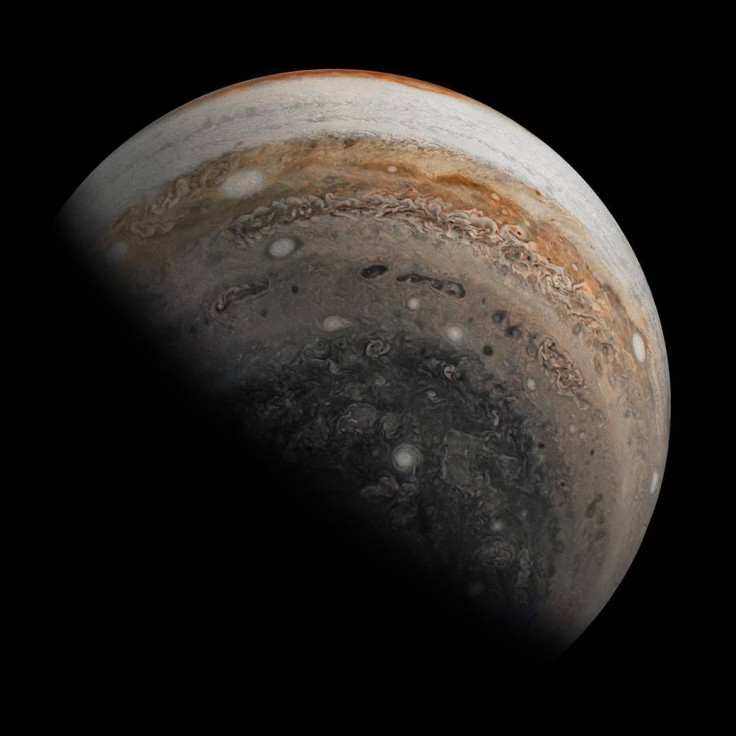Citizen Scientist Creates Stunning Image Of Jupiter's North Pole
KEY POINTS
- A citizen scientist put together a stunning image of Jupiter using Juno's data
- In the image, one can see the stunning swirls of Jupiter's signature cyclones in colors
- Such contributions highlight the role citizen scientists play in scientific endeavors
A citizen scientist has put together a stunning image of Jupiter's north pole by highlighting the features of the planet. The image reveals the subtle details in Jupiter's cloud structure.
NASA shared a stunning image of Jupiter on Wednesday, showing the planet's north pole in a way it had not been observed before. In the image, one can see the stunning swirls of Jupiter's signature cyclones in striking colors.
Such images can help broaden the people's understanding of Jupiter and kindle a deeper interest among them in the largest planet in the solar system.
"The huge, persistent cyclone found at Jupiter’s north pole is visible at the center of the image, encircled by smaller cyclones that range in size from 2,500 to 2,900 miles (4,000 to 4,600 kilometers)," the NASA feature on the image states. "Together, this pattern of storms covers an area that would dwarf the Earth."
As the NASA feature explains, the colors were quite exaggerated because the picture was a result of a combination of many images. Although it is clearly not a natural-color image, much like the infrared Jupiter image that made it look like a jack-o-lantern, it does provide a unique view of the planet's clouds.
Cyclones of Color at Jupiter’s North Pole 🌀
— NASA JPL (@NASAJPL) September 22, 2020
This false-color rendering of a @NASAJuno mission image shows a colossal cyclone at the center, encircled by smaller ones ranging in size from 2.5K-2.9K mi (4K-4.6K km). https://t.co/YWZGY451Mr pic.twitter.com/4SdlGhH4OC
This contribution also highlighted the important role citizen scientists play in scientific endeavors.
Citizen scientist Gerald Eichstädt created the stunning composite image using the data gathered by the JunoCam instrument during four close approaches to the planet this year. These images are available for the public to use and utilize for endeavors such as this one.
It was also a bunch of citizen scientists who helped discover 95 new brown dwarfs and ended up co-authoring the paper published in August. Even the asteroid that missed the Earth earlier this month was discovered by a citizen scientist from Brazil.
Such discoveries and contributions show how valuable citizen science is. In fact, the discovery of the 95 brown dwarfs was actually a part of an ongoing NASA-funded project where citizen scientists and professionals can collaborate in scouring through the agency's data.
"Through these collaborations, volunteers (known as citizen scientists) have helped make thousands of important scientific discoveries," NASA writes about its several citizen science projects.
The United States government even has a website specifically dedicated to citizen science, which it describes as a means for the public to participate in "addressing real world problems."
Through these citizen science projects, even members of the public can participate in ground-breaking scientific discoveries.

© Copyright IBTimes 2025. All rights reserved.






















